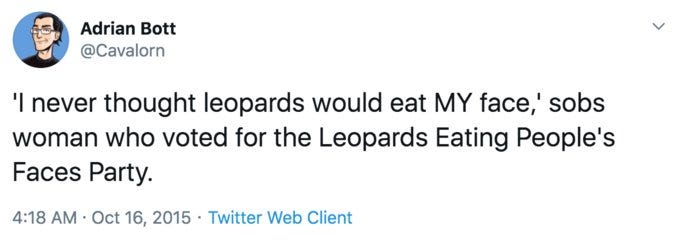Think before you sign
Over a hundred years of comics history makes it clear: Publishers are for profits, not people
I do a weekly podcast called ComicLab, which I co-host with another cartoonist who was there in the “late nineteen hundreds.” Our show has been compared to the NPR radio show, “Car Talk” — but for cartoons. Our listeners ask us questions, and we do our best to answer them, all the while poking fun at each other the way that only close friends with a 20-year history can do.
Wanna know one of our most often-asked questions? How do I prepare a submission for a publisher? How can I package my work for a syndicate? People who have never subscribed to a newspaper in their entire lives are stunned to discover that newspapers don’t have money to buy any more content from syndicates. Oh… and how about this one: What’s the best way to get my comic noticed by Webtoons? (Webtoons, for the uninitiated, is an app-driven spin on the comics syndicates that first popped up in the early ’00s.)
What happened? I blame movies — all of pop culture, actually. Every time a narrative involves the success of a creative person, the scene is the same — a powerful figure offers the artist a contract. It’s the same scene in every movie, TV show, novel, and song.
In the creative arts, specifically in comics, this hasn’t been an accurate picture of success for over 100 years.
100 years of comics history
“The Yellow Kid” is considered the official launch of the American comic strip. When Richard Outcault left “The New York World” for Hearst’s “New York Journal,” the publisher of “The World” continued running Outcault’s comic — written and drawn by a different cartoonist — claiming copyright ownership of the feature. For a while, both newspapers advertised that they featured the popular comic — each created separately by different people.
The creators of Superman, Joe Shuster and Jerry Siegel, were paid $130 and never a penny more until the upcoming 1970s Superman movie inspired comics fans to pressure Warner Brothers (which owned DC Comics) into giving each creator an ongoing $20k salary in 1975. The New York Times described the living conditions of each of these creators as “destitute” at the time. One was legally blind and being supported by his brother, and the other was eking out a living as a mail clerk. He made $7,000 a year (about $40,000 today).

The Batman that we know and love was mostly the creation of Bill Finger, who not only gave the character his iconic look but also created the concept of Batman’s alter ego, millionaire Bruce Wayne. Without Finger, there would be no Gotham City, no parents shot in murder alley, no Batmobile, no Bat Cave, no Robin, Riddler, Catwoman or Scarecrow.
But it was Bob Kane who got the accolades — and the cash. Kane’s father — a lawyer — advised him to negotiate sole credit as the creator of Batman and a percentage of everything DC Comics licensed the character on. The lucrative deal formed the foundation of the $10 million fortune Kane would accumulate over the course of his life. Among the stipulations was that every time Batman appeared in a comic, movie, TV show, etc. it would be accompanied by the phrase: “Batman created by Bill Kane.” Kane died a rich man. Bill Finger was buried in an unmarked potter’s field grave.
Jack Kirby created or co-created nearly all of the early Marvel Comics characters that launched the Marvel Cinematic Universe, including the Fantastic Four, Captain America, the X-Men, the Incredible Hulk, Ant Man, Iron Man, Galactus, Silver Surfer, Black Panther, Groot, Nick Fury, and dozens more. His creations launched a multi-billion-dollar publishing industry that included comics, TV, video games, and movies. But he never saw a significant portion of those earnings. In fact, much of his later life was spent trying to get his original art back from Marvel so he could sell it. Marvel only did so after the Copyright Act of 1976 expanded artists’ rights — but they required a signature reaffirming Marvel’s ownership of the copyright over the characters and stories.
Likewise, Steve Ditko was responsible for the distinctive look and style of Marvel’s flagship character, Spider-Man. His trippy visual style came to define his other co-creation, Dr. Strange. But, once again, he was never fully compensated for the wealth these creations went on to create. The creator of Spider-Man was so bitter by the experience he became a recluse, refusing nearly all attempts to contact him or invite him to the comic conventions that were springing up to celebrate the media he helped to define.
Both of those stories may come as a surprise to many of the people because Stan Lee has been given credit for creating the Marvel Universe. Unlike Bob Kane, Stan’s father was not a lawyer. But his mom’s cousin was Martin Goodman, the publisher of Timely Comics (which evolved into Marvel Comics). He gave a young Stan Lee his first job in comics, as an assistant, as a favor to Stan’s mom.
Of course, I’m cherry-picking data points here, but if you want to prove this to yourself, just go to GoFundMe.com and do a search for “comics artist” and you’ll see familiar names and faces asking for funds for everything from a liver transplant to teeth cleaning. Although Stan Lee painted a vivid picture of a bullpen teeming with creative people working elbow-to-elbow to crank out monthly comics, the truth was that this was a scene more suited to the pre-World War II Golden Age of comics. By the 1960s, the creators who built the foundation of today’s Marvel Cinematic Universe were freelancers and contractors. They were hired on a job-by-job basis with no security, no health care, no pension, and no promises.
Exceptions
A hundred years of comics history makes it clear that comics creators who sign with publishers and syndicates rarely end up well compensated for their skills. Granted, as I mentioned earlier, there was a brief period of time in which newspaper syndication was a genuine pathway to financial stability. And if you were signed to one of those contracts, you had a fair chance of building enviable wealth. But we should also note that many of those people who signed syndication contracts had something in common. Let’s see if you can guess.
A more modern example of comics creators who have achieved financial security can be found in comic-book creators like Todd Macfarland, who created “Spawn,” and Robert Kirkman, who wrote “The Walking Dead” and “Invincible.” Both of them have found financial stability through the works they published at Image Comics. Because the fundamental concept of Image Comics is that the creators retain ownership of their works. If Robert Kirkman had written “The Walking Dead” for Marvel Comics, he’d likely be another listing on GoFundMe today.
I would also add children’s books and young-adult graphic novels to the short list of exceptions. Publishers still have a superior ability to access the people who buy — and buy for — younger people. In this regard, self-publishing is so difficult that signing with a publisher is practically a necessity.
Companies have a single goal: Profit
Publishers and syndicates are companies. Companies exist to generate profit for the owners and shareholders. They are not designed to reward the workers who do the work that generates those profits. If it comes down to providing health care for comics creators or improving the profit, the publishers and syndicates will choose the latter. If it comes down to improving page rates or improving profit. They’ll choose profits. If it’s between a pension fund and profits, they’ll choose profits.
It has been that way for over a hundred years, and it’s not going to change.
So you can imagine how perplexed I am when a young person writes into our podcast to ask the best way to land a Webtoons contract. My friends, we are living in the new Golden Age of Comics, and many of you want to live in a world that exists somewhere between hopes and promises. Publishing has flipped on its axis, and few of us are talking about it. Publishing has become vanity press, and what we used to call vanity press (self-publishing) has become publishing. Financial stability is attainable, but it requires you to become well-versed in business. Sitting back and letting someone else watch the money was never an acceptable answer. The only difference is that today, we actually have a choice.
The New Golden Age
If you’re a young person who is interested in comics as a career, I have some advice for you. Learning art is one of three priorities. The second is writing. (Most cartoonists come to the art form from the visual art side, and they fail miserably because comic readers value writing over art.) Good writing saves bad art… and that equation almost never works in reverse. After all, they’re called comics readers, not comics lookers. And the third priority is business. Any art degree — including a degree in sequential art — that doesn’t incorporate business classes is preparing students for a world that simply doesn’t exist anymore. (And in some cases, never did.)
We’re living in a New Golden Age of Comics. The gatekeepers are gone. The rules have changed. And the playing field is more level than at any other time in history. It’s a very different career than the one that you’ve been sold on. And, in my experience, it’s better in every way.
This is the second of two parts. For Part One…
You don't need a publisher
Webcartoonists and independent comics artists have been self-publishing successfully for decades. You can, too.
This was adapted from a live presentation I delivered at Villanova University in September 2023.














I one hundred percent agree (to quote a well-known podcaster). It's very important to get this into the heads of beginning comic artists (why don't they learn this in their art schools? Oh, that's another can of worms).
I ALSO want to advocate for a new kind of publisher, who's more of a collaborator than an "employer": I turned my publisher onto crowdfunding (still kind of sneered at in The Netherlands) and I am very happy to have him handle all the printing, packing and sending of my crowdfunded comics (published in his publishing house).
Distribution? I hate it, so that's for him. Crowdfunding campaign? My cup of tea. Promotion? We do that together, and have great fun thinking up wild plans.
This kind of new artist-publisher-relationship requires a lot of trust and investment. There has to be a "click" on both sides. But I foresee this could be the way forward for comics publishers, and I know a lot of them are just as dedicated to and crazy about the art form as we are as makers. It's not about the big structures anymore. It's about directly finding your audience and elegantly getting the work out to them, instead of big print runs and vast but ultimately meaningless & expensive promotional campaigns. Publishers cannot afford anymore to take risks with more niche titles - so let's help them minimize that risk by turning them onto crowdfunding.
Of course, if you're happy to do all the heavy lifting of a crowdfunding campaign yourself, if you have the space for storing books (I don't, in my small Amsterdam apartment) and the time to handle orders - go for it. But if you don't, finding an energetic, trustworthy publisher to collaborate with may be a great solution, for both parties.
I met with Todd McFarlane when he was just starting to make a name for himself in the late 80s. We sat in his apartment studio and discussed his work, my portfolio, and the business of comics. He had exceptional business sense even back then. I wonder what my life would have been like had I thought to offer to work as his assistant… that would have been short lived as he quickly rose to fame and moved away. But just being around someone who knew the art and the business of comics, and eventually changed the face of creator-owned merchandising forever.